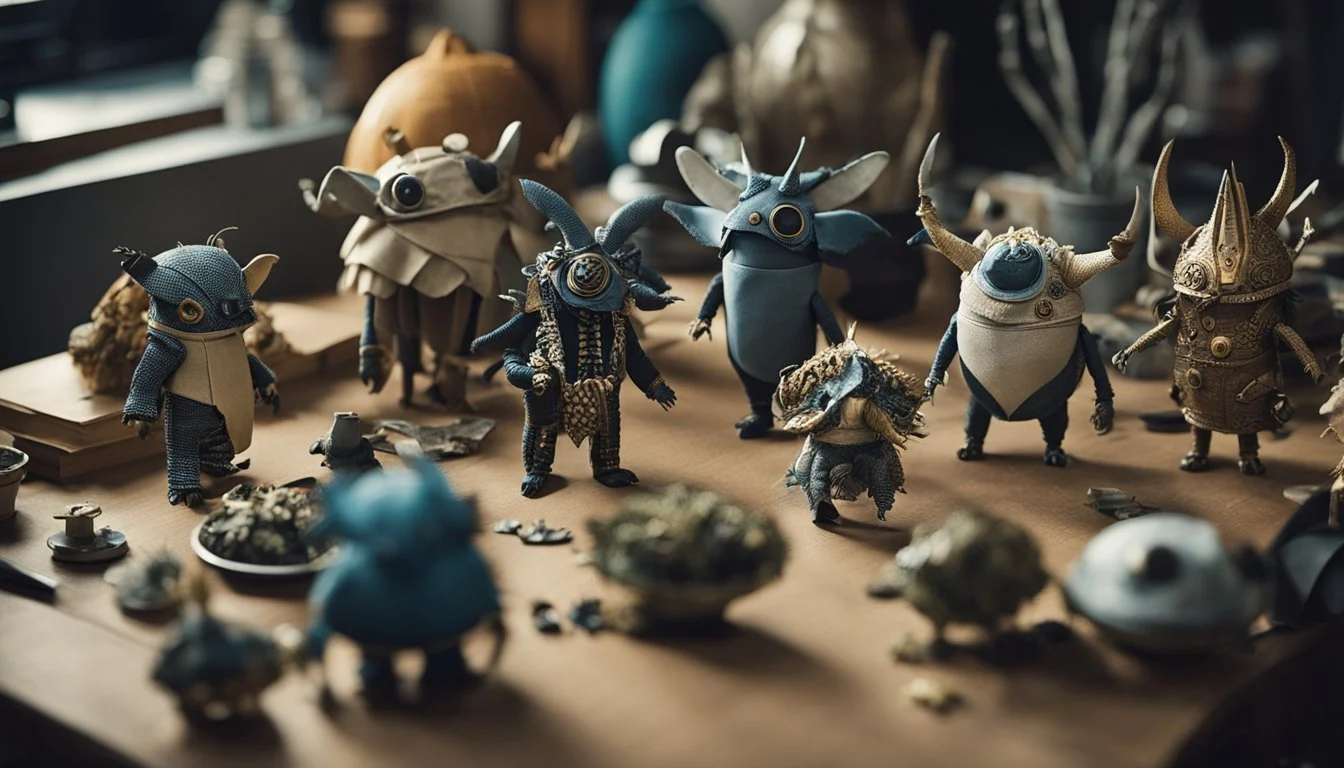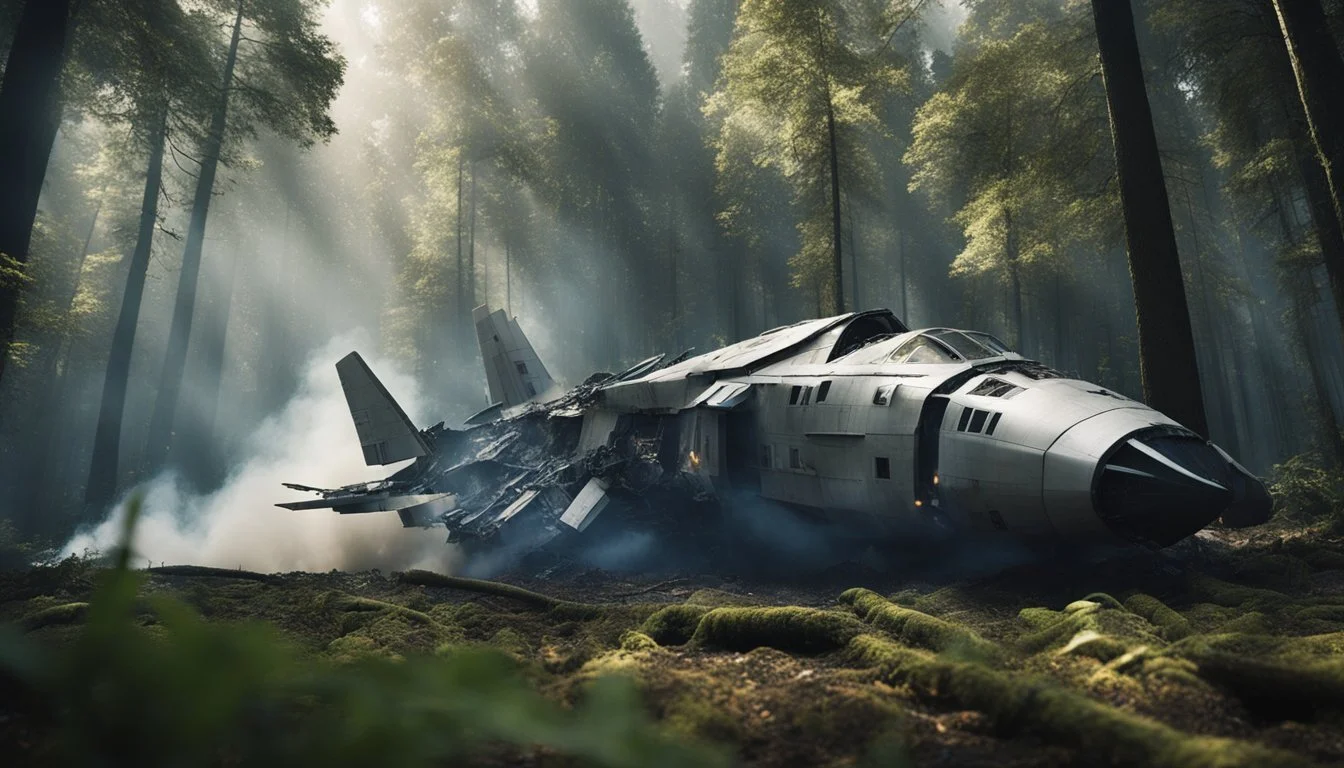7 Surprising Ways to Use Practical Effects in Your Films for Optimal Impact
Special effects play a crucial role in filmmaking, creating realistic visuals that captivate audiences. With advancements in technology, digital effects have become more prevalent; however, practical effects remain a valuable tool for filmmakers.
Practical effects often deliver tangible results that CGI cannot replicate, bringing a sense of authenticity to film productions. Incorporating practical effects can elevate your film by adding a unique, realistic touch that engages viewers in ways digital effects sometimes cannot.
1) Creating Realistic Weather Effects
Practical effects can remarkably transform a film's atmosphere by creating authentic weather conditions.
For rain, filmmakers often use rain machines. These devices simulate rainfall by pumping water through hoses with specialized nozzles, creating a believable downpour on set.
To create snow, various materials can be utilized. One popular method is to use biodegradable paper products or foam mixtures, which can be spread across the scene.
Wind effects add an extra layer of realism. Large industrial fans can simulate anything from a gentle breeze to a howling storm. Strategically positioned, these fans can make scenes feel more dynamic.
Fog machines are another tool. They generate fog using vaporized liquid, providing a dense mist that enhances mood and setting.
Thunder and lightning effects require careful synchronization of strobe lights and sound effects. The combination replicates the sensory impact of real storms.
Using practical weather effects, rather than relying solely on CGI, helps actors interact more naturally with their environment. These tangible elements can bring a scene closer to reality, engaging the audience more effectively.
2) Practical Fire Effects
Practical fire effects add a visceral, tangible element to film scenes. Unlike CGI flames, real fire delivers an unmatchable intensity and realism. Directors often use controlled burns, fire bars, and other pyrotechnic tools to create dynamic displays of fire.
Safety is paramount when working with fire. Production crews use fire-resistant materials and have safety personnel on hand. Careful planning ensures that actors and crew work in a secure environment while achieving the desired visual effect.
Filmmakers like Christopher Nolan have utilized practical fire effects in movies such as "The Dark Knight". The effect lends a genuine sense of danger and authenticity. On set, special effects experts manage the complexity of fire effects to ensure reliability and impact.
3) Miniature Models for Expansive Worlds
Miniature models have been a powerful tool in filmmaking to create vast and detailed worlds. These models are often used to represent intricate environments such as cities, landscapes, or space settings that would be impractical or impossible to build at full scale.
One iconic example is the miniature set used in the lava fight sequence on Mustafar in Star Wars: Episode III – Revenge of the Sith. The set was 25 feet wide by 50 feet long and shot over several months, demonstrating the level of detail and dedication involved.
In Back to the Future Part II, miniature models were crucial for bringing the futuristic cityscape and flying DeLorean car to life. These models allow filmmakers to control every aspect of the environment and achieve realistic effects that blend seamlessly with live-action footage.
Kubrick's 2001: A Space Odyssey showcased the use of miniatures to create realistic space scenes, paving the way for future science fiction films. Models of spacecraft, space stations, and planetary surfaces were meticulously crafted to provide a sense of scale and authenticity.
Miniatures continue to be used in modern filmmaking, combined with digital effects to enhance realism. They offer a tangible, controllable element that digital effects alone cannot replicate.
4) Old-School Matte Paintings
Old-school matte paintings add a timeless, handcrafted feel to film visuals. This technique involves creating a painted or photographed backdrop to replace or augment elements in a scene.
Originating in the early 1900s, these paintings have been essential in creating expansive environments without building costly sets. They were a key part of the visual magic in the original Star Wars films.
Matte painters typically work closely with a film's art director to ensure the painting aligns with the project's vision. Using programs like Photoshop or Illustrator, artists create concepts that must be approved before final implementation.
This method often involves combining hand-painted elements and digital editing to achieve the desired look. Despite digital advancements, the tactile quality of matte paintings continues to be appreciated for its unique aesthetic.
5) In-Camera Trick Shots
In-camera trick shots can add a unique flair to any film. These techniques allow filmmakers to create stunning visuals without relying on post-production effects.
One effective method involves using warped plexiglass. By heating and bending the plexiglass, filmmakers can blur certain areas of the frame while keeping others in focus. This technique can create a surreal double-vision look.
Another classic technique is the use of diopter lenses. A rimless diopter lens can help achieve different focus levels within the same shot, blending foreground and background elements seamlessly.
Reflections can also play a significant role. By carefully positioning mirrors, filmmakers can create complex images that would otherwise be difficult to achieve, adding depth and intrigue to the scene.
Forced perspective is another powerful tool. By strategically placing objects or actors at certain distances from the camera, filmmakers can manipulate the perceived size of elements within the frame.
Finally, creating shadows with cut-out shapes or gobo lights can introduce dramatic, eye-catching patterns. These shadows can enhance the mood and dimension of a scene, delivering visual interest without the need for digital intervention.
6) Handmade Creature Costumes
Handmade creature costumes can add a unique and tangible element to any film. They involve meticulous crafting using materials like foam, fabric, and latex. These costumes can transform actors into various fantastical beings, enhancing the story's visual impact.
Skilled artisans often sculpt detailed masks and body suits. This approach provides flexibility in movement and allows for greater expressiveness. The physical presence of these costumes often results in a more authentic interaction between characters and their environment.
Using practical costumes minimizes reliance on CGI, reducing production costs while maintaining high-quality visuals. This method also allows directors to make immediate adjustments on set, ensuring the desired look is achieved without extensive post-production work.
7) Analog Special Props
Analog special props are essential tools in creating tangible, physical effects that interact directly with the actors and the environment. These props can include everything from intricate models to fully functioning mechanical devices.
One classic example is the use of realistic weapons and tools. These props can enhance the authenticity of a scene and provide actors with a more immersive experience.
Mechanical effects, such as animatronics and puppets, fall under this category. These props bring characters and creatures to life with precise, controlled movements, avoiding the artificiality often associated with CGI.
Explosive devices and pyrotechnics can be categorized as analog special props. These elements can add a dynamic, visceral impact to action sequences, creating impressive visual spectacles without digital enhancement.
Another use of analog special props involves smoke machines and practical lighting effects to enhance scene ambiance. They add depth and atmosphere in a way that digital effects often can’t replicate.
For sci-fi or fantasy genres, analog special props like futuristic weapons or magic wands can be created using detailed craftsmanship. These props contribute greatly to world-building.
Costume pieces and wearable props also play a crucial role. Helmets, armor, or specialized equipment help in defining a character and making them more believable on screen.
Understanding the Role of Practical Effects
Practical effects have played a critical role in shaping the visual storytelling of cinema. They provide filmmakers with tools to create tangible, real-world illusions that often elevate the viewer's experience.
Historical Context
Practical effects have been used since the early days of cinema. Before digital effects, directors and special effects teams relied on physical techniques such as miniatures, matte paintings, and forced perspective. Early examples include Georges Méliès’ pioneering work in the late 19th century, which used simple stop-motion and in-camera techniques.
Notable films like "King Kong" (1933) and "Star Wars" (1977) showcased groundbreaking practical effects. These techniques set a high standard and continue to influence modern filmmaking.
Why Practical Effects Matter
Practical effects offer a sense of realism that sometimes surpasses CGI. They engage actors in a tangible environment, leading to more genuine performances. Modern directors, such as Christopher Nolan, often blend practical effects with digital enhancements to achieve stunning results.
These effects can be cost-effective and time-saving for certain scenes. Moreover, they add a level of craftsmanship and creativity that resonates deeply with audiences. Practical effects create immersive worlds that digital effects sometimes struggle to replicate, making them an indispensable tool in a filmmaker’s arsenal.
Techniques for Integrating Practical Effects
Integrating practical effects into films involves using camera techniques, blending with digital effects, and prioritizing safety to ensure seamless and impactful results.
Camera Angles and Lighting
Effective use of camera angles can dramatically enhance practical effects. Different perspectives can make effects appear more realistic, hiding imperfections and enhancing illusions.
Low angles, for instance, can make explosions or fire seem larger. Meanwhile, strategic lighting can highlight or obscure certain elements, adding depth and texture. Dramatic shadows can also increase the perceived scale of miniature models.
Additionally, color filters and gels can adjust the mood and tone, integrating seamlessly with practical elements.
Combining Practical and Digital Effects
Using both practical and digital effects can yield impressive results. Christopher Nolan’s Tenet serves as a prime example where practical effects were woven with digital enhancements.
Pre-visualization can help plan where each effect will fit, ensuring cohesiveness.
Practical elements, like real explosions or car crashes, can be augmented with CGI to fill in gaps or add layers.
Rotoscoping, where animators trace over frame-by-frame footage, can blend practical stunts with digital backgrounds, creating a seamless final product.
Safety Considerations
Safety is paramount when using practical effects. On-set dangers can range from pyrotechnics to the physical strain on actors.
Safety protocols should be established, with clear emergency procedures.
Specialized personnel, such as stunt coordinators and effects supervisors, are essential for managing risks.
Protective gear for cast and crew should be mandatory, and rehearsals conducted for dangerous scenes.
Consulting industry standards and regulations can prevent accidents, ensuring a safer filming environment.




